
by Anuradha Bakshi | Aug 1, 2008 | common school, two indias
 There is a new buzz in town: teach India, the latest campaign by a leading newspaper group. Larger than life posters, glitzy TV ads, Bollywood brand ambassadors, a dynamic website, heart rendering memories: the stage is set to make India literate, or so the well designed and implemented campaign would want us to believe. As an NGO who has been in the teaching business for almost a decade we qualified as partners and I received the concept note of the campaign.
There is a new buzz in town: teach India, the latest campaign by a leading newspaper group. Larger than life posters, glitzy TV ads, Bollywood brand ambassadors, a dynamic website, heart rendering memories: the stage is set to make India literate, or so the well designed and implemented campaign would want us to believe. As an NGO who has been in the teaching business for almost a decade we qualified as partners and I received the concept note of the campaign.
Amongst other things the teach India wants to : Inspire, motivate and mobilize people to volunteer for education and be more socially active citizens and build a more cohesive and inclusive society based on trust and reciprocity through bridging people from different backgrounds in order to fight discrimination and marginalization. Is this not what many of us have been wanting and trying to achieve for a long long time.
The campaign like every other media campaign is short: 3 months, at the end of which a monitoring process will begin to check the impact of the classes and the efficacy of the program. Wow, wish things would be that easy.
My mind went back a few years to the time when we too at pwhy had tried to inspire, motivate, mobilize people to be more socially active. I remembered the day when after having been in the glare another media campaign, replete with glitzy ads, Bollywood stars et al, I had sought help for our just one rupee campaign, where we did not ask for two hours of any one’s time, but just a simple rupee a day to teach India! The fact, as I realised just a few minutes ago, that I have even removed the campaign form our website, speaks for itself. The idea failed, no one was mobilised, inspired or motivated. A handful did come forward but the impact of such an option could only be felt if it withstood the test of time and became part of one’s life, almost like an old and bad habit!
For months I tried to flog the dead horse but soon realised it was mission impossible. I did many a post mortem but must admit could not find one valid reason that perhaps could have been addressed. There were many: people got bored and tired of one cause and wanted new ones; people preferred spending their money to help dramatic and heart rendering causes: a heart surgery, a tsunami…or simply coming with packets of food and feeding poor kids! Things had to be visible and the only visibility one could proffer were pictures of kids learning, exams results or some passionate blogs. Not enough to keep them interested and have them make the effort to remember the next month’s or year’s cheque. I had failed to motivated, inspire, mobilise people to give a simple coin, one that would not even been missed.
Soon the just one rupee a day dream was set to rest without much ado. But the teach India campaign bought it all to the fore and for more reasons than one. If India is to change for the better we all have to accept and assume our part of responsibility and cannot simply hope that government policies and a handful of committed NGOs will do the magic. And though the teach India campaign has all the right ingredients for success why is it that I feel that it will just wane away after the blitz is over. Am I simply getting jaded and tired.
It would be terribly unfair to a bunch of people from different walks of life if I ended my post here leaving all and sundry to believe that no one can get mobilised, motivated, inspired. We have been in the teach India business for almost ten long and exciting years and can boast of great track record (no failures in school, good results in Boards, kids gainfully and well employed) and this is because we managed to find, mobilise, inspire, motivate a great bunch of human beings that form what we proudly call the project why team! We did not have media campaigns, Bollywood stars or any such drama, we simply spoke to their hearts. Our teachers do not have swanky degrees or MNC jobs. They are simple Indians with a few years of schooling and loads of common sense. They belong to the strata we normally fail to acknowledge and often pass by. They are rich in commitment and goodwill and give themselves wholeheartedly to the work entrusted to them. And boy they do it well. To them all I can say is chapeau bas!
Over the past years they have been helped by another bunch of rare beings that go by the name of volunteers. They come form faraway lands: Singapore, France, the US an UK, Italy, Germany, Holland and other lands. They come from famed Universities and Business Schools. They are your would be honchos. They brave the heat, the stench, the mosquitoes and the spicy food and spend what is often their holidays teaching India. They do not need media campaigns to motivate, inspire or mobilise them: they simply follow their heart. To them again chapeau bas!
Teach India is undoubtedly a brave campaign which we would want to believe has been launched for all the right reasons. Its success depends on each one of us and our ability to carry on after the limelight has faded away.
You can see how we at pwhy teach India by flicking through these pictures.
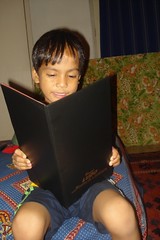
by Anuradha Bakshi | Jul 2, 2008 | common school
 A news item aired on a local TV channel caught my attention yesterday and made my almost congealed blood run cold once again: the Delhi Government had decided to pass all children till class VIII, doing away with examinations and marks in order to contain drop out rates and free the children from stress and angst. The children would be graded whatever that meant.
A news item aired on a local TV channel caught my attention yesterday and made my almost congealed blood run cold once again: the Delhi Government had decided to pass all children till class VIII, doing away with examinations and marks in order to contain drop out rates and free the children from stress and angst. The children would be graded whatever that meant.
Wow would say many, way to go. Sadly that is not the case and once again we are witness to half baked and politically motivated solutions governments are notorious for. The kind of formula that looks good on paper, replete with supporting statistics but does nothing to address the reality.
My recent post entitled ‘equal opportunities‘ skimmed the tip of the iceberg. The problem is not with having exams or not. If schools continue to run as they do, doing away with exams will simply delay drop out time to class VIII. Statisctics would have been doctored to look better. Every Delhi kid would have passed class VII. Whether he or she would have learned anything at all would remain a million dollar question.
In the present scenario children in class IV or V are barely literate. There is practically no teaching worth its name, let alone learning in most of the municipal and government schools. With no examinations and no failing one wonders what will happen. Another Alice in Wonderland situation!
A no exam system can only work in an enabling environment, where teachers take on the responsibility of imparting knowledge in a wider sense. The best example of these are what is widely known as alternative schools, where learning acquiring a new meaning altogether, where classes are small and teachers many. In Delhi schools, even better ones, classrooms are jammed packed. Over fifty children or more are taught by one teacher.
Exams, no matter how bad and stressful, did ensure that every child’s knowledge was tested and remedial measures taken at the appropriate time. With a no exam no failing situation children will just move from class to class with no check or balance. And by the time they reach class VII, it just may be too late for many. One must not forget that most of the children who attend such schools have illiterate parents and hence no way of being assessed or helped at home.
As long as schools remain as they are, such a decision spells disaster.
We need to redefine the society of schools, and turn schools into true temples of learning; a place where children from all walks of life can grow together in a nurturing and enabling environment: a common neighbourhood school that is a true level playing field. It is not just a matter of arresting drop out rates, but giving each child equal opportunities and respecting his or her constitutional right to free and fair education.
Is anyone listening!
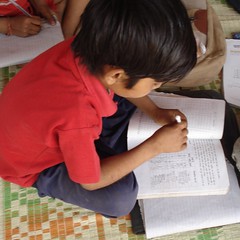
by Anuradha Bakshi | Apr 8, 2008 | common school, girl child
 I have waged a war against teaching shops and as often pleaded for well run common neighborhood schools. I have watched over the years the desperate of parents rich or poor to get their children admitted in schools and have raged against the proliferation of private schools in poor neighborhoods that maybe a tad better than government schools but are still a far cry from education should be.
I have waged a war against teaching shops and as often pleaded for well run common neighborhood schools. I have watched over the years the desperate of parents rich or poor to get their children admitted in schools and have raged against the proliferation of private schools in poor neighborhoods that maybe a tad better than government schools but are still a far cry from education should be.
However once again my lofty ideas and ideals were given a rude shock when I read an article in a daily about the imminent closure of 1000 unrecognised schools, many in the very lanes we work in that cater to what is know as EWS – economic weaker sections -. The article presents both sides of the coin. Whereas the petitioner says Cramming students into a small space in dangerous environments and offering a sub-standard education are what we are fighting against. What about child rights? an activist retorts education in a substandard classroom is better than no education at all. Inflicting regularisation will deprive students of even basic education, homes in slums are not safe, and we are not expecting them to become doctors or lawyers.”
Where will students go when the schools close down?” adds another voice. “It can’t be denied that these schools fill a gap the government’s failing to meet”. The simplistic solution proffered is that the kids will be adjusted in government run schools.
Some years back, when I was still a neophyte and still starry eyed and naive,I would have whopped with joy at the news of teaching shops being closed as at that time I too felt that the conditions of some of these schools were abysmal and intolerable. In those days I had not yet discovered the reality of government run schools! But as years went by my lofty ideas were rudely shaken as the reality of such schools. became apparent: children in class IV unable to read or write, no toilets, no desks, no teachers only one constant – corporal punishment. AS we slowly began our after school support – teaching as well as confidence building – the same children considered useless began not only passing but getting better marks. How can I forget the young girl who came after failing class VII thrice and went on to secure the 11th position in Delhi in class XII!
True that some of the teaching shops that are facing closure are run in dreadful conditions, and many are undoubtedly money making operations, but they do take in children of migrant populations who do not have any official documents to prove their identity, thus giving these children a go at education.
Last week I was appalled to find out that a woman who comes to our women centre had put her 3 children in a private school at the cost of over 800 rs a month though her family is extremely poor. I came to know that he reason for doing so was that the kids born in a remote village did not have a birth certificate and thus has been refused admission in the local municipal school. She did not know that a simple affidavit would have solved the issue.
If the 10 000 schools are shut I wonder where the children will go. Municipal and government schools are already overcrowded and anyway barely function. Once again we are face with a court order population of that does not take into consideration the reality on the ground. Walls around slums do not solve the habitat problem, closure of schools does not solve the education problem. The government has to start looking at running proper schools that can cater to the growing polulation of Delhi or find ways of reversing migration by improving conditions in the place of origin of such people.
When we began pwhy, we were not aware of the conditions of schools. We had wanted to create a space for children where they could come after school and spend constructive time. Today our main task is to ensure that they pass their examinations and do not drop out. Like everything else in India it seems that the poor have been let down, forgotten, marginalised. Yet they are n intrinsic part of society and protected by the same Constitution. It is time we started bridging the gap between the two Indias.
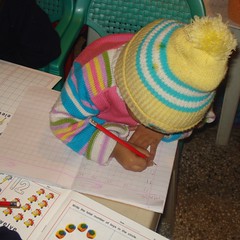
by Anuradha Bakshi | Jan 23, 2008 | common school

I have been watching, with utter dismay and deep concern, the plight of parents running from pillar to post to get their children admitted to nursery in a schools across Delhi, India’s capital city. The nursery admission saga has been going on for quite some time in this city with a wide range of unlikely protagonists in the fray: school authorities, state government, parent’s associations, activists and even the judicial system. And if that is not enough parents now resort to every trick in the bag: pleas, threats and the now sated string pulling!
Education is a a constitutional right for each and every child and yet good educations seems elusive. Over the years a surreptitious and complex caste system has evolved within the society of schools. And sadly education which should be a level playing field has now transformed itself into yet another social status definer with the better one coming at a higher price. A peek into any of the high caste one is sufficient to prove this: some schools today look more like luxury resorts than places of learning. The lower ones a.k.a government schools on the other hand defy all description. In the middle lie a plethora of schools that have mushroomed over the years as education made a subtle shift from places of learning to commercial enterprises, where quality is often sacrificed.
I was horrified when a young nephew ,who is in one of the leading schools in Delhi came for help with is French classes,a subject offered by many leading schools. His copy book was full of mistakes and the pronunciation he had been taught seemed Spanish and not French! The child would have been better off learning Sanskrit or any other Indian language. I brought this fact to the attention of his parents in the hope that they would take it up with the school, but a the look of alarm on their faces reminded me of the long haul it had been for them to get this child admitted into this prestigious school. They were in no mood to rock the boat.
I have always been a strong proponent of the common school system. A school in the neighborhood a child could walk to, a school where children from all walks of life would learn together and celebrate difference, a school where the only admission criterion would be your place of residence. No child should be subjected to rejection at an early age which is what is happening today as parents run from one school to another dragging little 3 years old who are made to go through incomprehensible interviews and complex admission procedures. They may not be able to express themselves but imagine what they feel as they listen to their parents vent their feelings. To me this is just another form of child abuse.
A self respecting society should ensure that this does not happen.
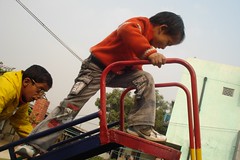
by Anuradha Bakshi | Dec 3, 2007 | common school, utpal
 Sunday December 2nd dawned as just another day for many. For a bunch of us it promised to be a special day but none of us could have imagined what it was to be.
Sunday December 2nd dawned as just another day for many. For a bunch of us it promised to be a special day but none of us could have imagined what it was to be.
At 9.30 am a tempo traveller reached our doorstep to take us to Utpal’s school. Us today was quite a party: there was Kim and Fen who had made a huge detour to come and spend a day with us, Barbara, our lovely senior volunteer who adopted us, Sophie our young volunteer who just came by, and of course our die hards Utpal supporters: Dharmendra, Amit, Kiran and maamji!
At 10. 20 am, we had a rendez vous with our sunshine man and his lovely family who joined the party. A few minutes later we entered the gates of Utpal’s school. My thoughts went back to the time when I had been asked by the school authorities whether someone would attend the monthly PTMs. I knew I would be there – God willing- but never imagined what Utpal’s parents would turn out to be!
Of the many incredible tings that have happened at project why, I feel that utpal’s story eptomises the essence and spirit of project why. This wondrous child has walked into so many hearts and proved beyond doubt that everything is possible if you just learn to look with your heart.
What we did that day would perhaps seem mundane to some: visited the school, watched children play, ambled in the winter sun, drove to a neighborhood market, ate pizza at a mediocre fast food joint, bought a woollen beanie cap, captured some moments on camera… This is how the day seemed when you looked just with your eyes and as my friend the fox from the Little Prince would say you would have missed out the essential.
But if we looked with our heart than the day became different. The tone was set at first by the protagonists of the moment who should not have been together as what do an emiment journalist, a famous photographer, a slum kid, a retired civil servant, a young professional. a business man, a french nurse and an ageing lady have in common. And why should they chose to spend a Sunday attending a PTM! It almost seemed as if St Exupery’s tale had come to life in its XXIst century version with its own little prince who strutted with a swagger as he set upon making each one of us rediscover things his way.
The day was filled with Kodak moments that beat any description. Utpal showed us his new antics as he rolled in the grass and ran up the slide and sashayed across the school. He then had a serious lesson in photography with Fen as he discovered the magic of a profesional camera that he handled with a confidence beyond his years. The mediocre fast food became a gourmet meal and the beanie cap a shopping spree. And the ride in the traveler a magic carpet ride.
When it was time to leave, only I could see the fleeting twitch of sadness in his beautiful eyes as he waved us bye bye. As we drove back in silence, my heart was overflowing with gratitude for all that I had been blessed simply because a little child had walked into my arid heart and allowed it to bloom again.
You can share some of those special moments here
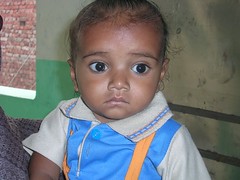
by Anuradha Bakshi | Nov 21, 2007 | common school

Two lost souls left this world yesterday. They had nothing in common bar the fact that they were in some way linked to pwhy.
Anil came to us almost exactly a year ago. He was 8 months old and suffered from a complex congenital heart problem. He needed multiple heart surgeries. We sponsored the first one and he was operated upon in March. His recovery was slow and he was in constant pain. It seemed that his chest bones had not been joined back properly something the doctors dismissed in a cursory way and said would be fixed at the next surgery. Anil barely ate and in spite of the love and care of his wonderful parents, Anil did not keep his appointment with the surgeons. He left this planet on his own freewill yesterday. A brave little fellow who will be remembered for his huge eyes and quiet manner.
Another lost soul left this earth yesterday crushed under the wheels of a speeding car. He was the husband of M, one of our ex staff members. M had come to me almost 6 years ago asking for help. Her husband was a drunk who earned his livelihood recycling junk but often brought nothing home. That day in a fit of temper he had thrown the food in the drain and she had nothing to feed her 5 kids. I gave her a job and for the next 2 or 3 years all was well. But sadly M a mercurial illiterate women got taken in by our detractors and lost her job.
M was always a difficult person and one who gave us many a sleepless night but today my heart goes out to her as she one again typifies the plight of women in India. Married off when they are still children without education of skill, their lives and social acceptability is totally dependent on the man they have been hitched to. As long as he is alive and no matter how wretched he is they are safe. Once he is gone they are reduced to nothing.
M had five children. Her daughter is of marriageable age, her youngest one still in primary school, her elder son a rogue. I wonder what she will do and how she will live on.
A sad day for all of us.

 There is a new buzz in town: teach India, the latest campaign by a leading newspaper group. Larger than life posters, glitzy TV ads, Bollywood brand ambassadors, a dynamic website, heart rendering memories: the stage is set to make India literate, or so the well designed and implemented campaign would want us to believe. As an NGO who has been in the teaching business for almost a decade we qualified as partners and I received the concept note of the campaign.
There is a new buzz in town: teach India, the latest campaign by a leading newspaper group. Larger than life posters, glitzy TV ads, Bollywood brand ambassadors, a dynamic website, heart rendering memories: the stage is set to make India literate, or so the well designed and implemented campaign would want us to believe. As an NGO who has been in the teaching business for almost a decade we qualified as partners and I received the concept note of the campaign.












